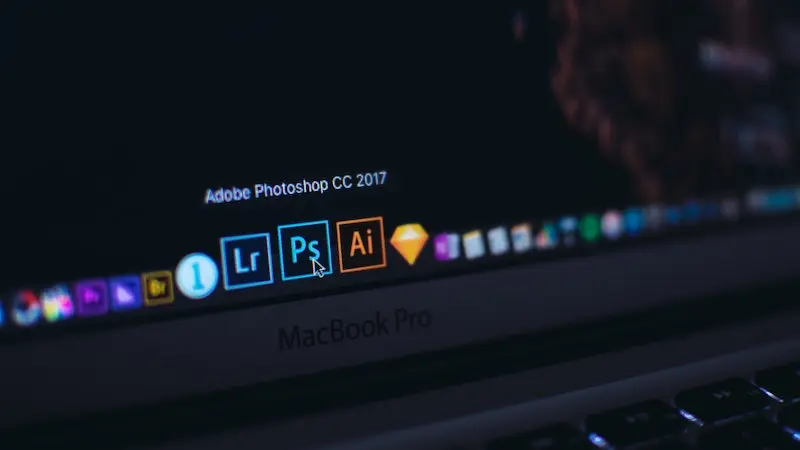There are currently a large number of different formats in which you can export photos. However, not all formats are the same, and it’s preferable to select the export file according to the use desired by the professional photographer.
And for good reason! An image intended to be posted online does not inevitably have the same characteristics as a photo that is to be printed. It is therefore necessary to save these files in suitable formats according to the medium in which they will be circulated. The objective is to maintain optimal reading comfort, while controlling other criteria such as the quality or the weight of the image.
In which format do you export your photos? Find all the answers in the following lines.
Table of contents
JPEG format, light, but sometimes of poor quality
JPEG format is undoubtedly the most common format in photography. It is a universal format, lightweight and very easy to use. JPEG format can be read by virtually any computer program that exists and is recognized by the vast majority of Internet sites. It is, moreover, a compressed format, which takes up very little space on a memory card.
However, when it comes to exporting photos, JPEG format has some drawbacks. In this case, its lightness is potentially due to a significant compression of the image which can lead to a loss of quality. Remember, moreover, that a photo in JPEG format must have perfect exposure at the time of taking the picture. The quality of JPEG files, indeed, does not make it possible to compensate for underexposure or overexposure that is too pronounced.
JPEG format is often referred to as destructive because it compresses the information in the image. It is preferred for sending content by email, in order to transmit smaller files. On the other hand, this format is not recommended for printing because the compression causes a more or less significant deterioration of the quality of the image. JPEG format generates photos that are less sharp with colors also affected. The same applies to photo editing. When the camera records an image as a JPEG, presets are automatically applied to it (white balance, contrast, brightness, etc.). These adjustments, which sometimes greatly deteriorate the image, are then no longer modifiable in post-production.

The RAW format to keep all the information
The RAW format (also referred to as "Digital Negative") is an unprocessed file often used by photographers. In other words, when the camera captures a shot in this format, all the data (white balance, saturation, contrast, sharpness, etc.) is recorded. The photograph is then neither processed nor compressed.
Exporting photos in RAW format has some advantages. In this case, it is possible to omit certain features and certain settings, because the photographer can work on all these parameters during the editing process and choose the adjustments that best suit them. This therefore implies greater flexibility in the photo editing process.
Moreover, since it is a format without compression or processing, the images are of better quality. With RAW files, the original quality of the photo is preserved. Similarly, all the modifications made to an image in the RAW processing software are converted into metadata appended to the original file. The original image file remains unchanged, and it is possible to start editing from scratch when necessary to achieve better results.
Unfortunately, the RAW format takes up a lot of storage space. It is therefore not the ideal format for sending photos by email or publishing them on a website, for example. Furthermore, it can only be read with specific image processing software.
The DNG format, a universal RAW format that guarantees sustainable access to photographs
DNG format is a RAW file designed by Adobe. The main difference is that it is a royalty-free format. Concretely, this format standardizes the many RAW formats currently used by different brands. As a reminder, there is not only one type of RAW file since each manufacturer has its own.
DNG is a standardized file type that ensures sustainable access to archived photographs. The specifications of this format are public, and made available to camera manufacturers and photo software publishers. Specifically, thanks to the DNG format, all compatible software programs can access the information contained in the file.
Exporting photos in DNG format has the same advantages as exporting photos in RAW format. This file allows you to store high-quality images. Nevertheless, DNG files need to be developed to obtain a final version of the image. Therefore, it’s generally advisable to use the DNG throughout the editing phase, then to export the file in another format that is more suitable for sharing.
The TIFF format for very high resolution
The TIFF format is widely used for printing photographs. It is very popular with photographers and graphic designers for its flexibility, quality and almost universal compatibility.
This format has the advantage of not being compressed and of accepting transparency zones. Consequently, the photographs do not suffer any loss of quality. Overall, the TIFF format is particularly suitable for work requiring very high resolution, since it retains the initial image quality. Images can also be modified without any loss of information.
On the other hand, the files exported in TIFF format are quite large (from a few dozen MB to several GB). They therefore can’t be used for an Internet site, for example.
PSD format, to prevent loss of information and perform photo editing with layers
PSD format is very commonly used by Adobe. This is the only format that supports all the features available on Photoshop. PSD files are often recommended for archiving on CDs, DVDs or external hard drives.
Photos exported in PSD formats are also of very high quality. No matter how many times the file is modified, opened, and then re-saved, there is no loss of quality. With each modification, all the layers (protection layers, adjustment layers, etc.) are saved, allowing the photographer to go back at any time or resume their work where they left off.
In addition, it is possible to print photos directly from PSD files (as long as the printer is able to read this format). On the other hand, the size of PSD files is often large. This requires appropriate storage.

Which export for which application in photography: summary table
Here is a table summarizing the different export formats to consider for your photos depending on the medium and the use you wish to make of them.
| Use | JPEG | RAW | DNG | TIFF | PSD |
| Format suitable for photo editing | No | Yes | Yes | Yes | Yes |
| Sharing on the Internet | Yes | No | No | No | No |
| Photo printing | Yes (but pay attention to quality) | No | No | Yes | Yes (depending on the printers) |
| Photo editing with layers | No | No | No | No | Yes |
| Sending email | Yes | No | No | No | No |
RAW, JPEG, TIFF, PSD or even DNG format, each file has its advantages and disadvantages. The important thing for the photographer is to select the format most suitable for their use and the medium on which they intend to share the images.










